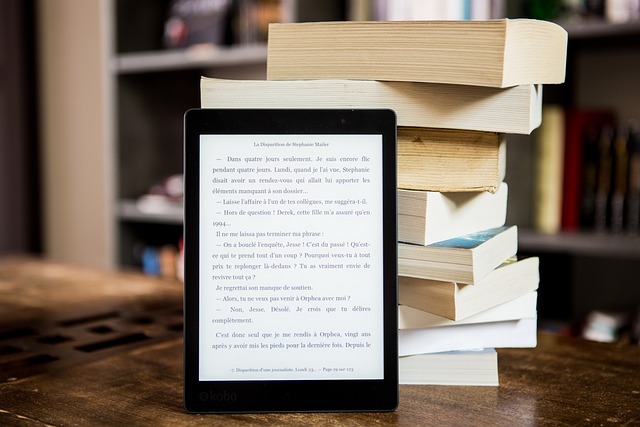In my last blog post, we looked at how to outline your book. Now in this post we will cover how to actually write your nonfiction book. The following writing tips will help you to produce the first draft.
Choose your method of writing.
There are a couple of ways you can write your book. There are two methods which I have used to write my book faster. One method is free writing and the other method is voice recording. Choose whichever method you feel comfortable with to write your nonfiction book.
Method #1: Free Writing

Free writing is a very useful method used by many writers to help them boost their creativity. It is also a great way to help you write your book faster. This technique involves writing continuously for about 10 to 15 minutes without worrying about spelling or grammar. This is a very effective method that can also help you to overcome writer’s block.
With your outline in front of you, simply start writing your thoughts down on paper or on your computer. Don’t worry about making your sentences grammatically correct and don’t stop to check your spelling. Just let your ideas flow freely onto the sheet.
Method #2: Voice Recording

Recording your voice to write your nonfiction book can also be an effective tool. This works well when you don’t have access to a computer or a notebook and pen when inspiration strikes. You can use a small tape recorder or your mobile phone. There are free voice recording apps that you can download to your phone.
Since you completed your outline, you can use that to help you to record each chapter in order. Just press the record button and start recording your voice. When you finish your recording, play it back and type out your recorded content. This will help you to complete the first draft of your nonfiction book in a matter of days.
Once you have chosen the method you want to use to write your book, use the following writing tips to help you to complete your first draft.
Write a strong introduction.

It is important to have a strong introduction. It is what you use to convince your readers to read the rest of your book. The introduction tells your readers what your book is about, what they will learn and why your book is the best one to read.
You can start your introduction with a personal story, an amazing fact, or a question directed at your readers. This should lead up to the problem that your books solves and what it would look like once the problem is solved. Your introduction should also explain what your book is about and how it relates to the reader.
The introduction is your opportunity to grab your readers’ attention and compel them to continue reading your book. Use your introduction to convince your readers that you as the author, are qualified to solve their problem.
Tell your readers how your book will benefit them. Your readers want to know how your book will improve their lives. Explain what good things will happen if your readers follow the advice or instructions you present in your book. Tell them what new skill or knowledge they will gain from reading your book and how it will change their lives for the better.
And finally, give your readers proof that the information in your book will solve their problem. You can give examples of customers who read your book and the positive impact it had on their lives.
You can provide testimonials from other people who have read your book and how it benefited them. You can also provide charts and graphs or financial information which will help to convince your readers that your book is worth reading.
Focus on one chapter at a time.

Writing each chapter is like writing an essay. Each chapter should begin with a simple introduction. Start by explaining what the chapter is about, what the reader will learn, and what benefits they will gain.
Each chapter should focus on one idea or concept at a time. Introduce the concept, define what it is, and describe what is involved, who it is for, and what benefits can be gained from this concept.
If it is a concept that you are teaching your readers, then tell them what tools or equipment they will need and provide step by step instructions on how to complete the task.
You could also provide examples of what will happen after following the steps. Then summarize the chapter providing the reader of actionable steps they should follow to complete the task.
Write your first draft through to completion.
In order to complete the first draft of your nonfiction book, you should write every day. However, this is not always possible. Sometimes, I work on my book every weekend rather than during the week because I find I have more time.
Whatever your schedule is, you should always make time to work on your book. Don’t worry about trying to complete a chapter each day because it puts too much pressure on yourself. And if you were unable to finish a chapter it may cause you to feel discouraged.
Instead, give yourself a goal of how long you will write for. You can write for an hour or 15 minutes a day, as long as you give yourself time to write. If you schedule a time to write your book, eventually, you will succeed in finishing your first draft.
Do more research.

It can be frustrating when you are writing a book and then you have to stop because you realize that you have not done enough research on a particular concept. This can really interrupt the flow of your writing. The best thing to do is to do more research after you have written your chapter.
Instead of interrupting your writing to search for more information on the internet or to look up a particular topic in another book, you could write a note reminding you to do more research.
Other Writing Tips
There are several other writing tips that you can implement while writing the first draft of your nonfiction book. You want to ensure that your book has been written in a way that makes it easy for your readers to read it. Consider the following writing tips to help you with your writing.
Write short, simple sentences and paragraphs to make your book as readable as possible. These days, people read on mobile phones, tablets and computer screens.

Because their eyes are focused on a bright screen and a white background, your readers may find it difficult to read your text if it consists of long paragraphs and very little white space.
If you decide to publish your nonfiction book as an e-book, make sure that you write short paragraphs consisting of two or three sentences which are one to three lines long.
Leave spaces between paragraphs and leave extra spaces between sections. If your book is divided into chapters, start each chapter on a new page.
When typing out your book, use a font that is big enough for people to read. A font is the size of the text typed in a document, on a web page, or on your phone. Nobody wants to strain their eyes trying to read small fonts.
A size 12 font is the ideal size of the text in your book. You should also use font styles such as Times New Roman, Arial, or Calibri to make your text more readable.
Use lists and bullet points in your writing, particularly when you are writing instructions or listing items. This makes your point clearer and it is also a great way to present related items of information.
If you publish your nonfiction book in e-book format, include active hyperlinks to other relevant websites within your book. The hyperlinks should lead the reader to other websites that provide useful information and resources.

Be careful when using graphics and images in your book. If you publish an e-book, adding too many graphics will increase the file size of your book and it may take longer for your customer to download your e-book. If the download time is too long then the customer may cancel their purchase.
If you publish in print format your images may appear blurry or pixelated if the resolution of your image was less than the required amount which is 300 dpi (dots per inch).
Once you have completed writing the first draft of your nonfiction book, check out the next blog post which will be about proofreading and editing your nonfiction book.



